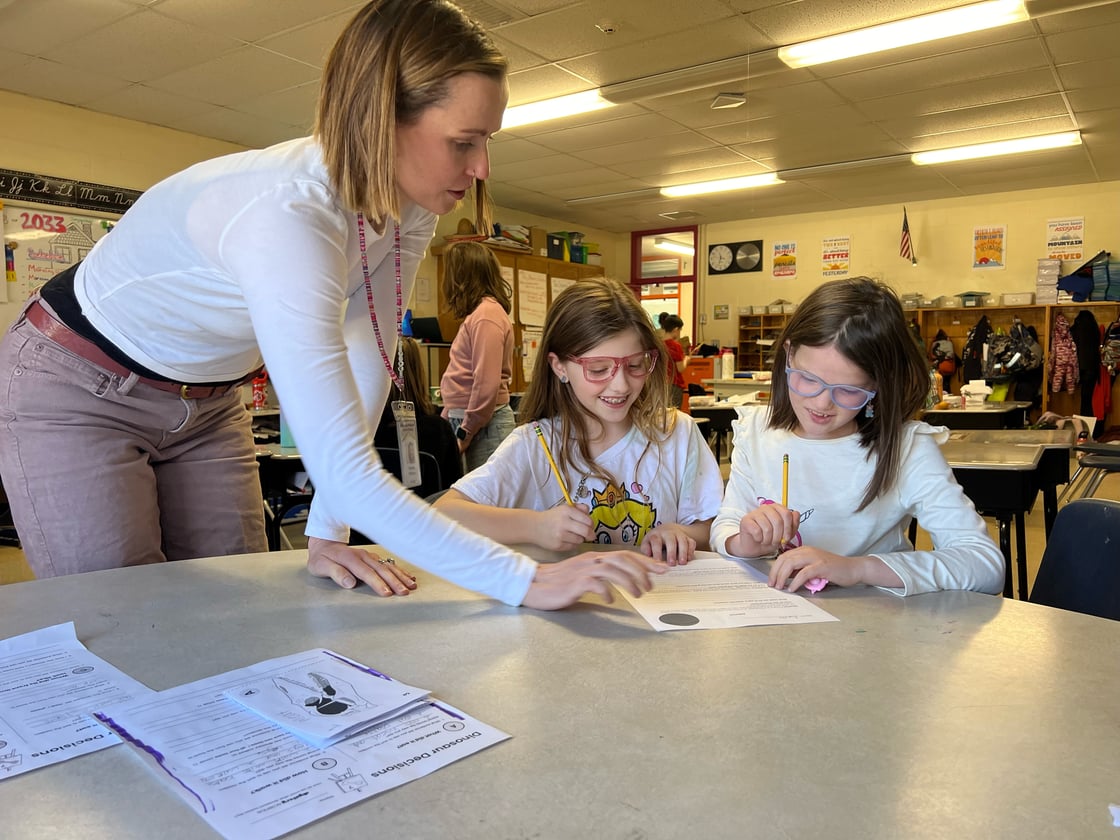
NEW LONDON — Teaching students how to tie shoes, dress for different seasons, and develop personal hygiene routines are just a few ways the Kearsarge Regional School District is trying to keep young children healthy.
The district starts its health curriculum in the elementary grades, giving teachers an opportunity to share valuable lessons with students as young as kindergarten.
“At this stage of development, children are establishing habits and attitudes that can impact their overall well-being,” said Jacob Palmer, who teaches health and physical education at Simonds Elementary School in Warner. “Teaching health at a young age helps instill a foundation of healthy behaviors, encourages the development of positive social skills, and promotes a sense of self-awareness.’’
Palmer said that early exposure to a variety of health topics equips students with the tools to navigate physical and mental health challenges, fostering a sense of independence and self-sufficiency.
Students in Kindergarten through Grade 5 have health every other week, covering a wide range of age-appropriate topics related to physical, mental, relational, environmental, intellectual, and consumer aspects of health.
Topics include hygiene, communication, heart health, food, self-confidence, decision-making, healthy friendships, vaping, and puberty.
Health classes are required by state law in elementary and middle school grades, but Kearsarge devotes significant resources to making these classes a priority.
Chelsea Williams, who teaches health at Kearsarge Regional Elementary School at Bradford, Kearsarge Regional Elementary School at New London, and Sutton Central School, said topics covered in health class have become increasingly important.
She’s grateful to be part of a district that values the curriculum and starts it at such an early age. And ideally, she’d love to see the class offered even more. Williams said the teachers could spend the entire year on the mental/emotional and social/relational pieces alone.
“Learning how to process and cope with difficult feelings and navigating peer relationships are so critical and often such a need for kids,’ she said. “My dream would be to see students weekly; giving us time to take a deeper dive into some of the content and create space for bigger projects.”
Palmer, who has been teaching for eight years, said he is passionate about helping the next generation.
“I am driven by the opportunity to contribute to the holistic development of young minds, helping them build a strong foundation for a lifetime of well-being,’ Palmer said.
Palmer said one of his favorite topics to teach is character traits as it lays the foundation for positive behavior and personal development.
The teachers said one benefit to teaching health is that all students are genuinely interested in the topics because they are relatable to their own lives.
“The students love health class as it helps them understand how to care for their bodies,’ Palmer said. “Getting their attention is not usually a challenge, as they are quite receptive to the information.
Wiliams added, “The health curriculum is covering topics that are pulled directly from their day-to-day life.’’
To help the students better understand the topics, they work on different projects throughout the year. For the younger students, Palmer conducts a shoe-tying project. Older students delve into a lesson on deodorant, where they research different types and choose one that suits them based on ingredients, benefits, and the manufacturer.
Williams said she enjoys most topics but loves most of what is covered in Grade 5, particularly the units on accessing valid information and puberty.
“I try hard to make sure each lesson is relevant to their lived experiences and includes information and skills that can be immediately applied to their life,” she said.
Students write stories about solving problems, make posters to encourage positive health behaviors, create and record a commercial for a hygiene product.
Williams said the best way for the students to learn how to take care of their body is to learn how their body works and what they can do to keep it feeling its best.
“I once worked with a health teacher who enthusiastically told his students that, “health is connected to everything!” which rang so true for me,’ Williams said. “The connections made in health class reach every part of a student’s life. Every student should be able to apply their health lesson to their own lived experiences.”
Discover more from John Guilfoil Public Relations
Subscribe to get the latest posts sent to your email.